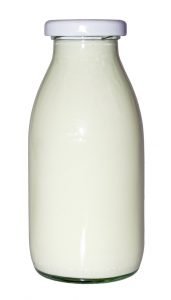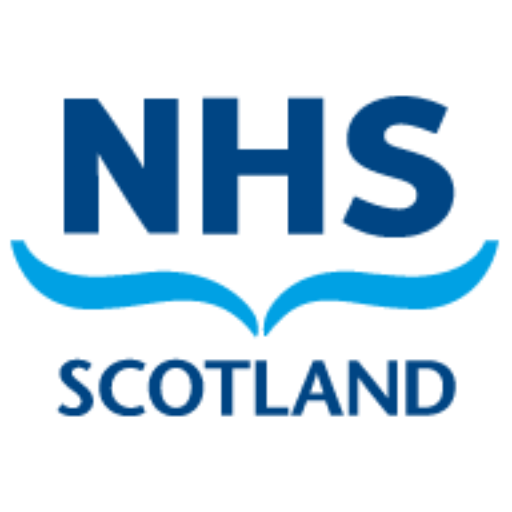
Some people have immediate allergic reactions to milk, where they develop rash, swelling, itching etc. Others have more delayed reactions, especially diarrhoea and abdominal cramps. Both of these are because of a problem dealing with the milk proteins. Some people get a mixture of these. ![]() There are also people who have a problem with the lactose (sugar) in milk – this is not an allergy, although it can cause similar issues (bloating, diarrhoea).
There are also people who have a problem with the lactose (sugar) in milk – this is not an allergy, although it can cause similar issues (bloating, diarrhoea).
So make sure you know what the problem is, as it affects what kind of testing can be offered, what milk substitutes you should use, and whether there is a risk of![]() anaphylaxis.
anaphylaxis.
Milk allergy usually becomes apparent at a very young age, if a baby is formula fed, as formula is made from cow’s milk, but it can also affect exclusively breast fed babies, and the diagnosis may be more difficult to make. Breast fed babies can be affected by milk allergy because they are exposed (through breast milk) to milk proteins consumed by their mothers! Where a breast fed baby has milk allergy, it is sometimes necessary for their mum to stop drinking milk and eating foods containing or made from milk.
If you are allergic to milk, you will usually also be allergic to other foods made from milk, including yogurt, cheese, butter. When you start looking at it, there are so many things to avoid – fromage frais, ice cream, milk powder in crisps etc. ![]() See our Patient Information Leaflet and
See our Patient Information Leaflet and ![]() Food Labelling page for more information.
Food Labelling page for more information.
But unlike some food allergies, you can have a partial allergy, where a child can eat cooked foods containing small amounts of milk but might still react to drinking milk or even touching it.
Because milk is an important source of calcium, an ![]() alternative milk is usually recommended. In young babies (under 6 months) this is usually a specialist infant formula eg Nutramigen. In older babies soya formula may be used (although some people allergic to cow’s milk will also be allergic to soya). Older children may use soya milk that has been fortified with calcium. You can also get soya based yogurt and cheese.
alternative milk is usually recommended. In young babies (under 6 months) this is usually a specialist infant formula eg Nutramigen. In older babies soya formula may be used (although some people allergic to cow’s milk will also be allergic to soya). Older children may use soya milk that has been fortified with calcium. You can also get soya based yogurt and cheese.
Goat’s milk and sheep’s milk should NOT be used by people allergic to cow’s milk. Lactose free products should NOT be used by people allergic to cow’s milk either.
Testing
There are blood and skin tests available for milk allergy (![]() see Testing), but the best test is strict exclusion followed by re-challenge. Only if symptoms and signs were very severe would this not be appropriate.
see Testing), but the best test is strict exclusion followed by re-challenge. Only if symptoms and signs were very severe would this not be appropriate.
Risk of anaphylaxis
If you have the immediate type of allergy to milk, then there is a risk of ![]() anaphylaxis. Your doctor can prescribe an antihistamine and give you an allergy plan in case you have an unexpected reaction. Severe reactions in young infants are however very rare, mainly because once you know about the allergy, it is relatively straightforward to keep you child away from milk and related products. Once a child can eat some cooked or baked milk in foods without a problem, the risk of anaphylaxis virtually disappears.
anaphylaxis. Your doctor can prescribe an antihistamine and give you an allergy plan in case you have an unexpected reaction. Severe reactions in young infants are however very rare, mainly because once you know about the allergy, it is relatively straightforward to keep you child away from milk and related products. Once a child can eat some cooked or baked milk in foods without a problem, the risk of anaphylaxis virtually disappears.
Prognosis
Most children with milk allergy will grow out of it, although it may take several years. See our ![]() information leaflet on milk free weaning.
information leaflet on milk free weaning.
Your health professional will recommend when to try reintroducing cow’s milk in a careful step by step way (sometimes called a “milk ladder”), a dietician can give further advice about this. In high risk cases, repeating allergy tests over a year or two can be useful to see if things seem to be getting better or not. ![]() Our patient information leaflet can be found here.
Our patient information leaflet can be found here.
Other allergies
Most children allergic to milk are not allergic to anything else, but the risk of being allergic to another food eg egg is higher. This is not however a reason to avoid trying anything new. ![]() See Weaning and Antenatal page.
See Weaning and Antenatal page.
